Beginning Filters Python: Difference between revisions
No edit summary |
No edit summary |
||
| Line 16: | Line 16: | ||
>>> Show(reader) | >>> Show(reader) | ||
>>> Render() | >>> Render() | ||
</source> | |||
[[Image:ClipFilterPython1.png|800px]] | [[Image:ClipFilterPython1.png|800px]] | ||
<source lang="python"> | |||
>>> clipFilter = Clip(reader) | >>> clipFilter = Clip(reader) | ||
>>> Hide(reader) | >>> Hide(reader) | ||
>>> Show(clipFilter) | >>> Show(clipFilter) | ||
>>> Render() | >>> Render() | ||
</source> | |||
[[Image:ClipFilterPython2.png|800px]] | [[Image:ClipFilterPython2.png|800px]] | ||
<source lang="python"> | |||
#get camera | #get camera | ||
>>> camera = GetActiveCamera() | >>> camera = GetActiveCamera() | ||
| Line 32: | Line 36: | ||
>>> camera.SetPosition(4.15603, 30, -35) | >>> camera.SetPosition(4.15603, 30, -35) | ||
>>> Render() | >>> Render() | ||
</source> | |||
[[Image:ClipFilterPython3.png|800px]] | [[Image:ClipFilterPython3.png|800px]] | ||
<source lang="python"> | |||
#we can see what's going on a little better | #we can see what's going on a little better | ||
>>> clipFilter.UseValueAsOffset = 1 | >>> clipFilter.UseValueAsOffset = 1 | ||
>>> clipFilter.Value = 5 | >>> clipFilter.Value = 5 | ||
>>> Render() | >>> Render() | ||
</source> | |||
[[Image:ClipFilterPython4.png|800px]] | [[Image:ClipFilterPython4.png|800px]] | ||
<source lang="python"> | |||
#let's change the orientation of the clip filter | #let's change the orientation of the clip filter | ||
>>> clipFilter.ClipType.Normal | >>> clipFilter.ClipType.Normal | ||
| Line 47: | Line 55: | ||
>>> clipFilter.ClipType.Normal = [0,0,1] | >>> clipFilter.ClipType.Normal = [0,0,1] | ||
>>> Render() | >>> Render() | ||
</source> | |||
[[Image:ClipFilterPython5.png|800px]] | [[Image:ClipFilterPython5.png|800px]] | ||
<source lang="python"> | |||
>>> clipFilter.Value = -3 | >>> clipFilter.Value = -3 | ||
>>> Render() | >>> Render() | ||
</source> | |||
[[Image:ClipFilterPython6.png|800px]] | [[Image:ClipFilterPython6.png|800px]] | ||
<source lang="python"> | |||
>>> clipFilter.InsideOut = 1 | >>> clipFilter.InsideOut = 1 | ||
>>> Render() | >>> Render() | ||
</source> | |||
[[Image:ClipFilterPython7.png|800px]] | [[Image:ClipFilterPython7.png|800px]] | ||
Revision as of 16:47, 5 August 2009
Introduction
ParaView filters
This usecase shows a user how to use filters to modify the display of data.
All filter examples assume that the user starts with a new model. To start over, go to the menu item Edit → Delete All, and then re-open your data.
Data is opened by going to File → Open. Example data files can be found on the ParaView web page at http://www.paraview.org.
Clip filter
<source lang="python">
>>> from paraview.simple import *
>>> reader = ExodusIIReader(FileName=".../can.ex2")
>>> Show(reader)
>>> Render()
</source>
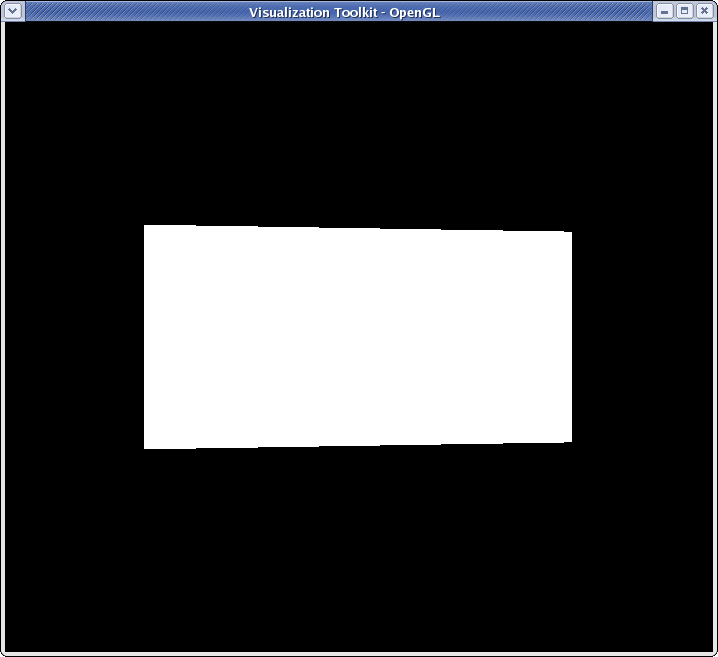 <source lang="python">
>>> clipFilter = Clip(reader)
>>> Hide(reader)
>>> Show(clipFilter)
>>> Render()
</source>
<source lang="python">
>>> clipFilter = Clip(reader)
>>> Hide(reader)
>>> Show(clipFilter)
>>> Render()
</source>
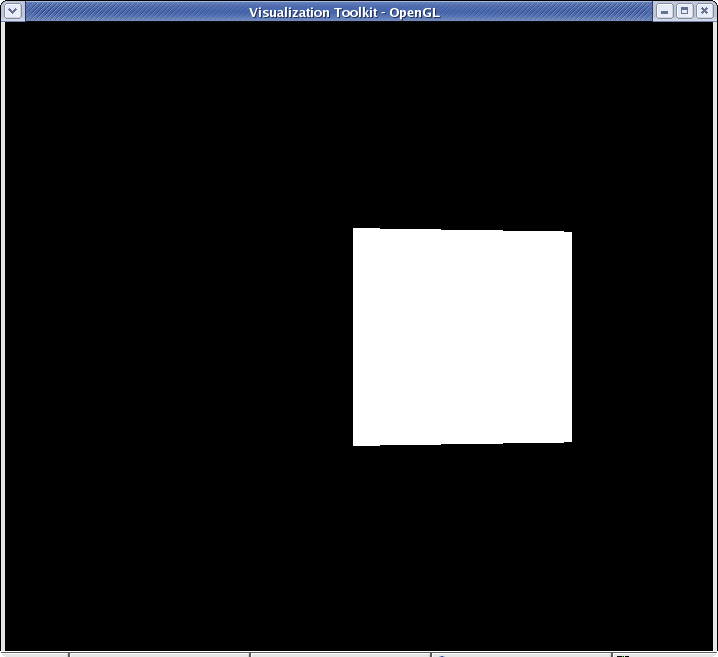 <source lang="python">
<source lang="python">
- get camera
>>> camera = GetActiveCamera() >>> camera.GetPosition()
- figure out where you are
>>> camera.SetPosition(4.156,4.0,-36.29)
>>> camera.Elevation(30)
>>> camera.GetPosition()
(4.1560389876787056, 19.261366923548998, -32.200729057625857)
>>> camera.SetPosition(4.15603, 30, -35)
>>> Render()
</source>
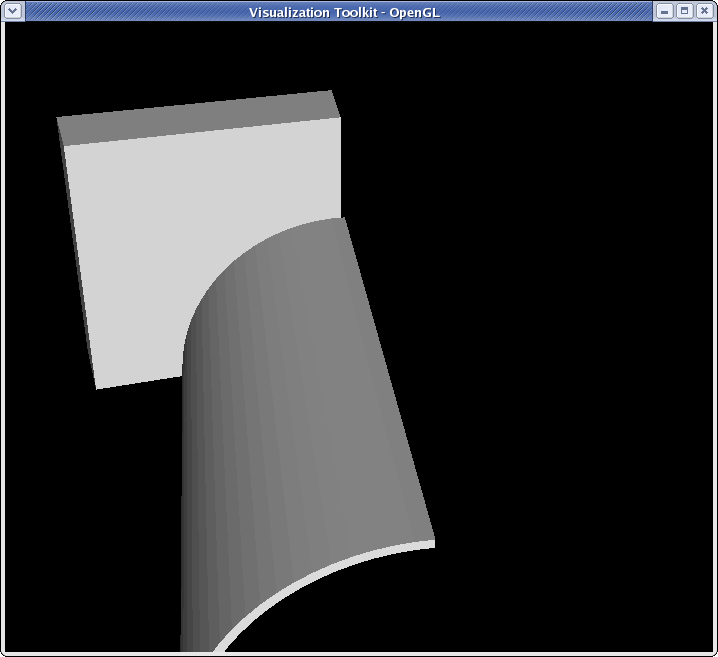 <source lang="python">
<source lang="python">
- we can see what's going on a little better
>>> clipFilter.UseValueAsOffset = 1
>>> clipFilter.Value = 5
>>> Render()
</source>
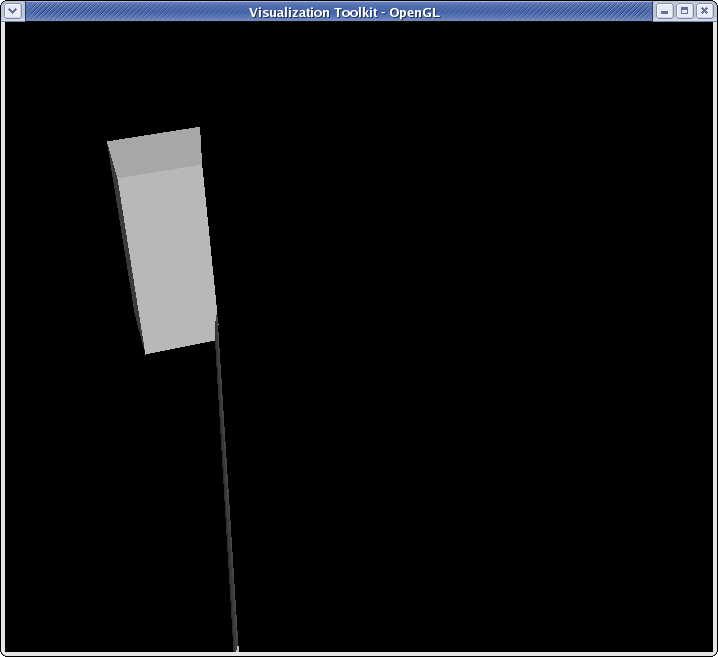 <source lang="python">
<source lang="python">
- let's change the orientation of the clip filter
>>> clipFilter.ClipType.Normal [1.0, 0.0, 0.0] >>> clipFilter.ClipType.Origin [0.0, 0.0, 0.0]
- reset the offset value of the clip to 0
>>> clipFilter.Value = 0
>>> clipFilter.ClipType.Normal = [0,0,1]
>>> Render()
</source>
 <source lang="python">
>>> clipFilter.Value = -3
>>> Render()
</source>
<source lang="python">
>>> clipFilter.Value = -3
>>> Render()
</source>
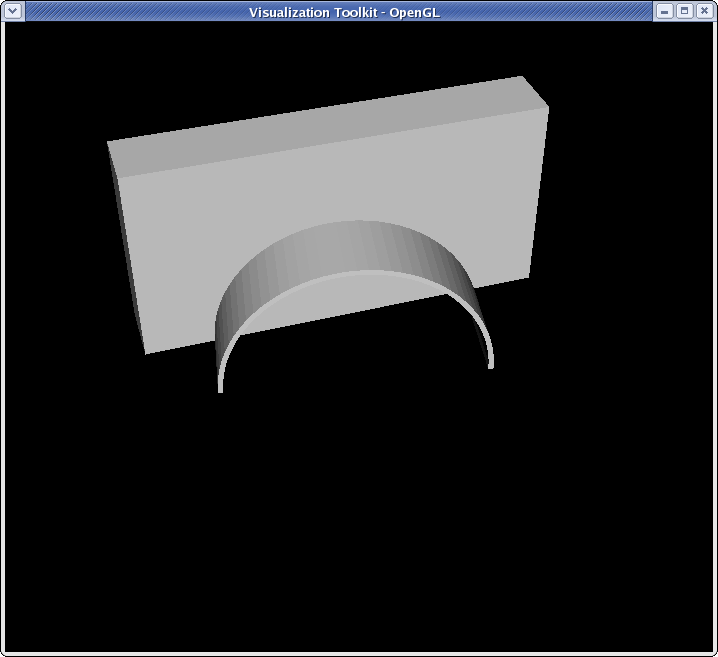 <source lang="python">
>>> clipFilter.InsideOut = 1
>>> Render()
</source>
<source lang="python">
>>> clipFilter.InsideOut = 1
>>> Render()
</source>
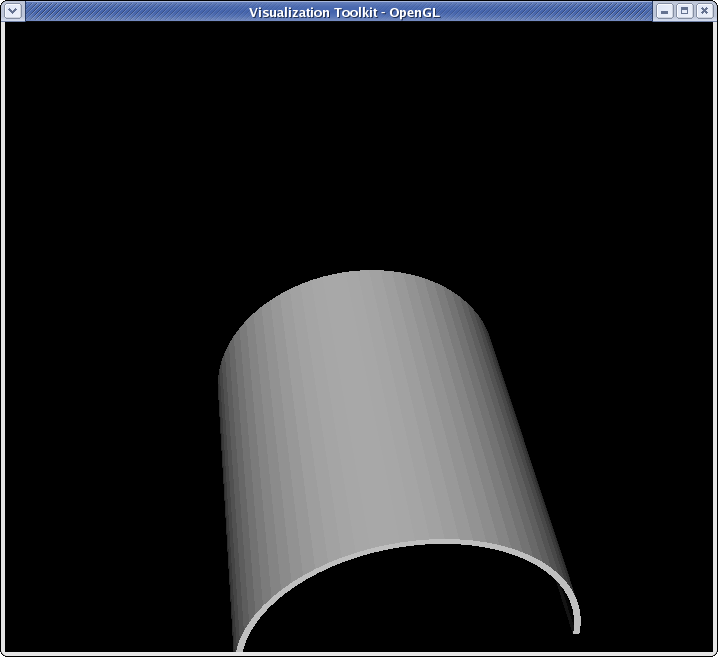
Slice filter
Glyph filter
Threshold filter
File:ThresholdFilterPython.png
Contour filter
Clip to Scalar filter
File:ClipScalarFilterPython.png
Cell to Point/ Point to Cell filters
These filters are used to convert a data set from being cell data to being point data and vice versa. This is sometimes useful if a filter requires one type of data, and a user only has the other type of data. An example would be using can.exo. You cannot get a contour of EQPS directly, since EQPS is cell data and contour only works on points. Use filter Cell Data to Point Data first, then call contour.
Stream Tracer
Calculator filter
Acknowledgements
Sandia is a multiprogram laboratory operated by Sandia Corporation, a Lockheed Martin Company, for the United States Department of Energy’s National Nuclear Security Administration under contract DE-AC04-94AL85000.